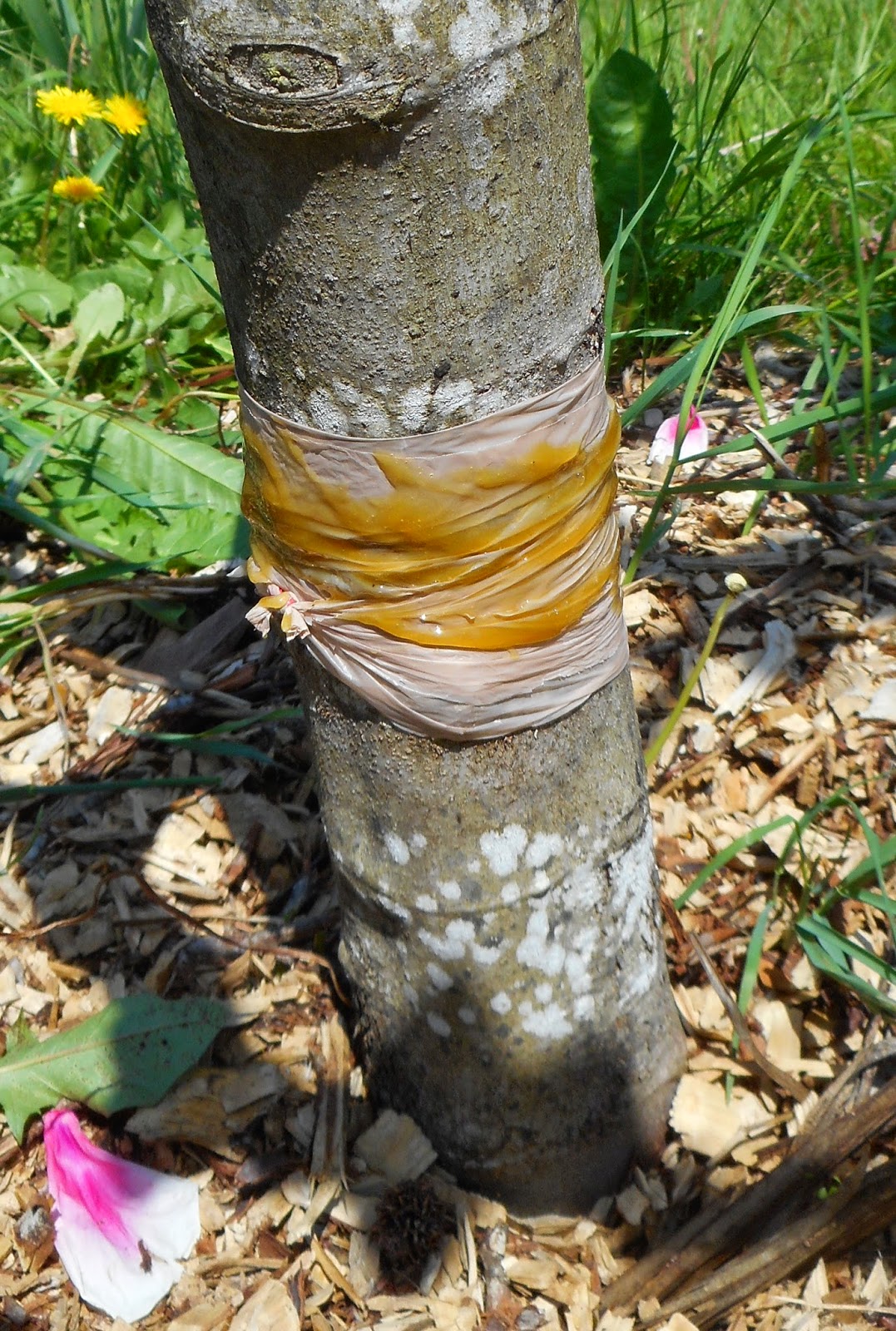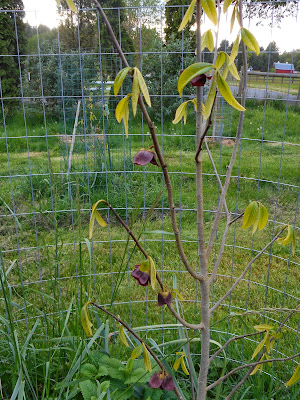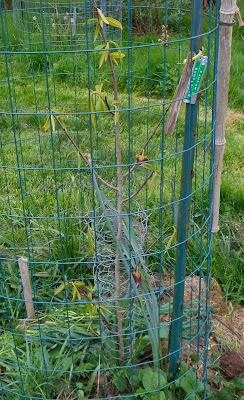 |
| Tanglefoot and polyethylene strips. 5.3.15 |
This is a good time of year to apply Tanglefoot to fruit tree trunks. It's well in advance of fruit ripening, but after most of the Spring rains.
For figs, the Tanglefoot prevents ants from climbing the trunk and entering ripe figs. Without the Tanglefoot, my figs invariably have some added crunch, that seems to move around on the tongue. In addition to being odd, infection by ants also seems to cause mold spoilage of the figs before they fully ripen. I suspect the ants carry mold spores.
For cherries, Tanglefoot prevents black aphids. My theory there is ants farm the aphids. Either that or, the black aphids climb the trunk themselves. Whatever the case, the Tanglefoot prevents them.
I also apply to apples, pears, and peaches. The treatment does not stop problems caused by flying insects, but does stop problems caused by tree-climbing insects.
I don't know that tanglefoot applied directly to the trunk is harmful. It is messy, sticky, and next to impossible to remove. I wrap tightly with 6-inch-wide strips of light-weight polyethylene. The strips are cut from disposable grocery store bags. They are too flimsy to girdle the trunk. I wrap twice, then tie with a square knot. Then apply Tanglefoot, squeezing a strip from the tube like toothpaste, and spread on the plastic wrapping using a disposable plastic spoon.
Being very cheap, I save the plastic spoons from my work place lunch. I usually take my own flatware, but sometimes forget.
 |
| Wrapping fig tree trunk. 5.3.15 |
During the winter, I remove the Tanglefoot. By then, it is covered with dust, dirt, plant material, and ineffective at stopping insects. The polyethylene bags are flimsy enough, to simply pull off the tree trunks.
Alternatively, one could apply sticky plastic tape, sticky-side out. I would not use duct-tape, which is too tough and might girdle the tree.
 |
| Tree protected with Tanglefoot. 5.3.15 |



















